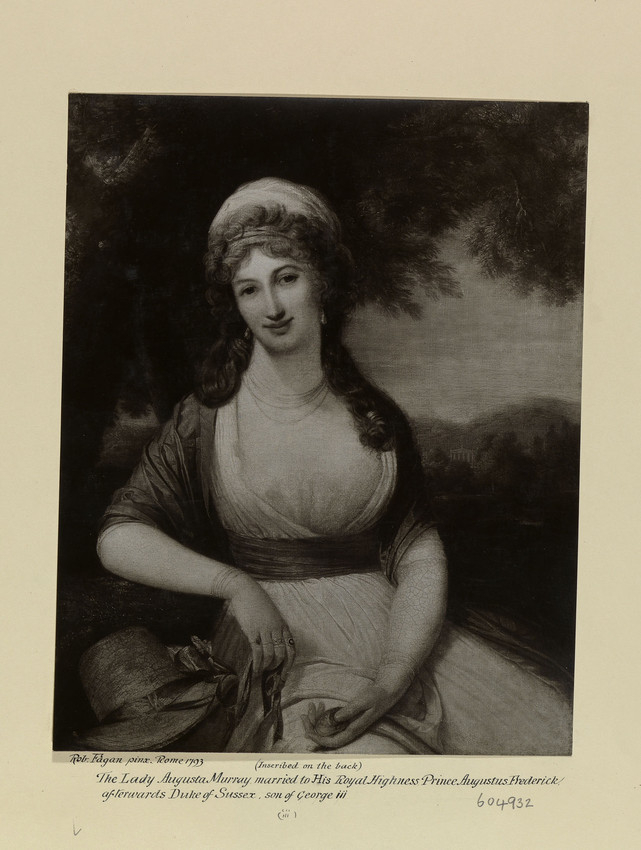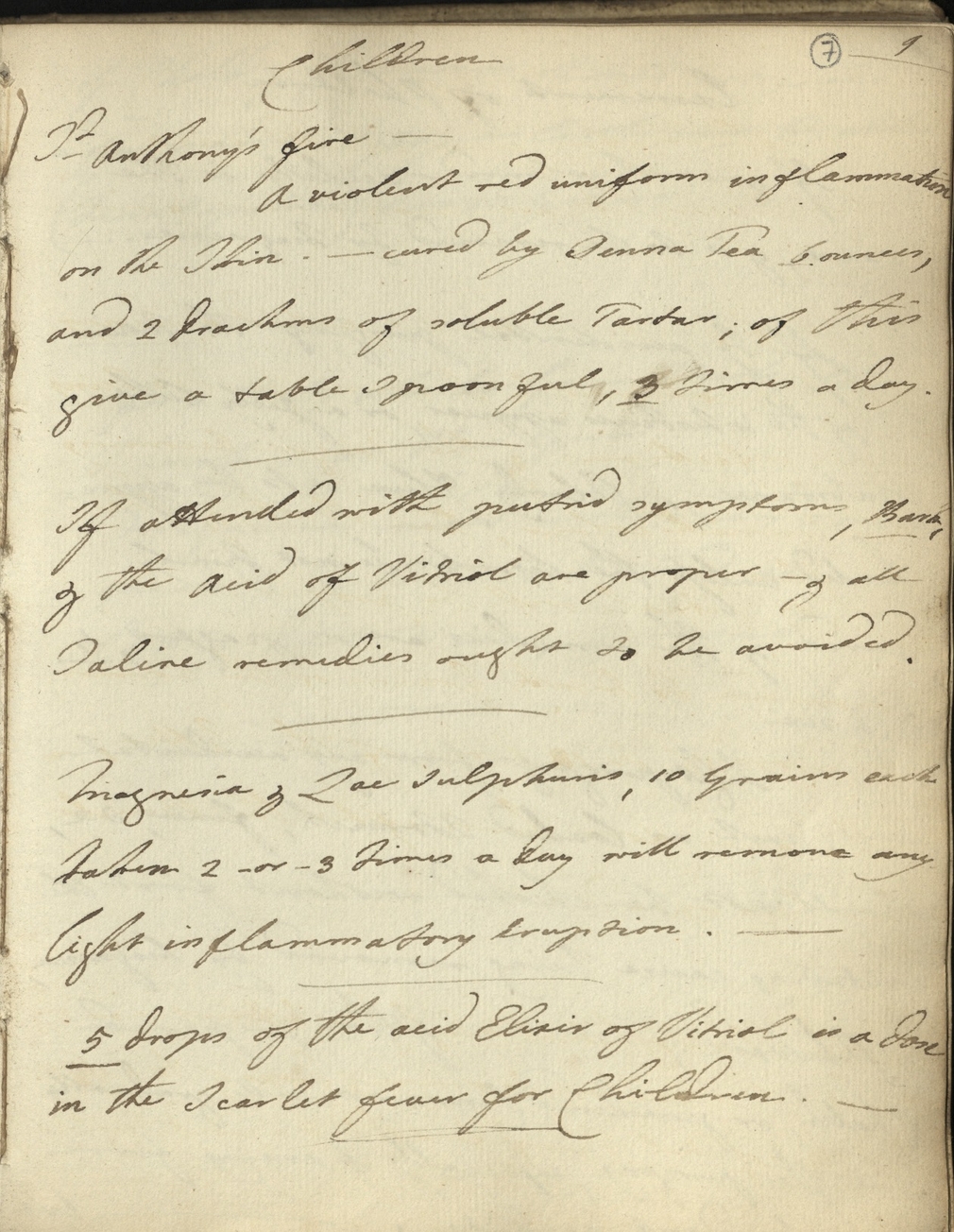
Lady Augusta Murray, RCIN 604932 ©
The collection of papers numbered GEO/ADD/51 belongs to Lady Augusta Murray (1768-1830), daughter of John Murray, 4th Earl of Dunmore and Lady Charlotte Stewart, daughter of Alexander, the 6th Earl of Galloway. Lady Augusta is best known for her illegitimate marriage to Prince Augustus Frederick, Duke of Sussex, sixth son of George III, in 1793. After a brief betrothal, the couple were married at the Hotel Sarmiento, Rome, on 4 April 1793, without witnesses. With no consent having been sought or obtained, the marriage was in contravention of the Royal Marriages Act 1772. They married again after the publication of banns on 10, 17 and 24 November 1793, in a ceremony on 5 December at St George’s Hanover Square, London. However the marriages were declared legally null and void under the 1772 Act and so Lady Augusta could not be styled Duchess of Sussex or Her Royal Highness. They had two children, but the Prince was largely absent. They lived together for several months in 1800 before separating for the last time.
The papers themselves comprise four commonplace books, one book of cures, a booklet of copied excerpts from Voltaire’s plays, and a printed book, and this collection can be seen to complement her papers at The National Archives (PRO 30/93). The volumes in the Royal Archives provide glimpses into the intimate mental, cultural and domestic world of Lady Augusta Murray. For instance, the book of cures was compiled by Lady Augusta from at least 1794, in which she documented treatments and cures for ailments and conditions, with several particularly relevant to the care of her son and, later, her daughter. They cover a wide range of medical conditions from nerves and bruising through to spasms of the womb and drowning.

Lady Augusta Murray’s cure for St Anthony’s Fire, GEO/ADD/51/5 Royal Archives/© Her Majesty Queen Elizabeth II 2019
Lady Augusta’s literary interest is evident in her volume of excerpts from Voltaire and her copy of the first volume of a novel, Eliza Fenwick’s Secresy; or, the Ruin on the Rock by a woman (London, 1795). It is also clear from the wide range of sources from which Lady Augusta compiled her commonplace books (volumes into which significant extracts from other works were copied for the owner’s personal use), which included Shakespeare, Cowper, Sheridan, Crébillon and Hume. These volumes contain handwritten excerpts from other books and poetry, as well as some of Lady Augusta’s own thoughts. They thus offer real insight into her reading matter, thoughts and emotional state.
The commonplace books appear to form a chronological series, though only two are labelled, “vol. 5th” and “vol. 6th”, and only four survive in the Royal Archives. The content of these volumes is extremely wide-ranging, as they are almost scrapbooks containing titbits which caught Lady Augusta’s attention, sometimes containing notes on history and science and even observations of a political nature. However, most passages are either extracts of verse or prose, or her own observations on sentiments and relationships. Entries after 1800 show a marked shift in Lady Augusta’s mood, with the copied texts and her own words often engaging with themes of broken-heartedness and betrayal.
The Royal Archives also holds papers of the Duke of Sussex, due for publication as part of the Georgian Papers Programme.
